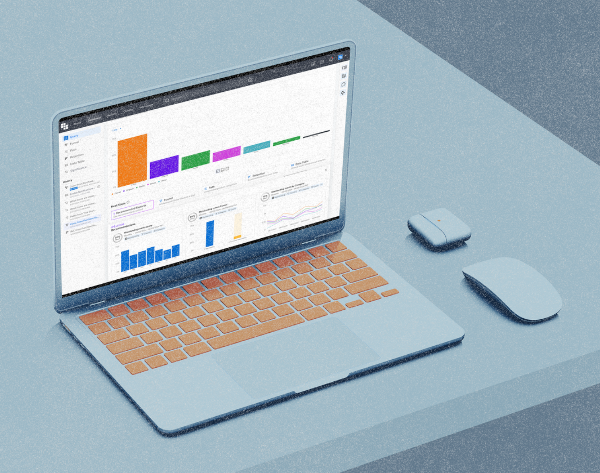The role of AI data analytics in business intelligence is rapidly expanding, yet many organizations still struggle to extract meaningful insights from their data. With the introduction of Kubit Lumos, we are bridging that gap—offering faster insights, streamlined reporting, and enhanced data exploration to drive more informed decisions.
By integrating AI directly into product analytics and enterprise analytics, Kubit ensures that businesses can identify key trends, detect anomalies, and uncover insights more effectively—without added complexity.
How AI is Transforming Data Analytics
As data continues to grow exponentially, organizations face increasing challenges in making sense of it all. AI-driven analytics is changing that landscape:
-
- AI reduces the time spent on manual data analysis by up to 80%, helping teams focus on strategic initiatives (Gartner).
-
- 97% of business leaders believe AI will play a critical role in enhancing data-driven decision-making (PwC).
-
- Companies leveraging AI-powered analytics report a 20-30% improvement in operational efficiency (McKinsey).
By integrating AI into Kubit’s analytics platform, we are making it easier for teams to ask better questions, get faster answers, and ensure data accuracy—all without requiring additional engineering resources.
What’s Coming with Kubit Lumos?
Our AI data analytics features are designed to eliminate friction in the data exploration process, offering deeper intelligence and more efficient workflows. By integrating AI into Kubit, we’re making it easier than ever for teams to access insights, automate repetitive tasks, and optimize their decision-making. Below is a closer look at how these features will reshape analytics.
AI-Generated Summaries for Instant Insights
Understanding a report’s key takeaways shouldn’t feel like searching for a needle in a haystack. With AI-generated summaries, Kubit instantly pinpoints the most relevant trends and anomalies, reducing the time teams spend sifting through data.
-
- Identify key trends, anomalies, and critical data points within seconds.
-
- Highlight meaningful context from reports to simplify analysis and drive better decision-making.
-
- Reduce time spent manually interpreting reports, allowing teams to focus on strategy.
Advanced Query Intelligence
Too often, teams unknowingly repeat the same queries, wasting valuable time and resources. Kubit Lumos proactively identifies redundant searches and recommends relevant saved reports before a user even hits ‘run.’
-
- Detect repetitive queries and provide recommendations for the next best action.
-
- Display relevant saved reports before running a new query to avoid redundancy.
-
- Use AI-driven suggestions to streamline workflows and improve efficiency.
AI-Powered Report Recommendations
Kubit Lumos doesn’t just provide answers—it helps you ask better questions. By analyzing past user behavior and query patterns, it recommends additional reports or filters that might provide a more comprehensive view of the data.
-
- Suggest similar reports, alternative filters, and complementary analyses after each query.
-
- Help users uncover deeper insights that might otherwise be missed.
-
- Reduce duplication by guiding teams toward the most relevant reports and datasets.
Real-Time Insights into Data Quality
Data quality issues can erode trust in analytics, leading to flawed decisions and wasted resources. With Kubit Lumos, real-time alerts flag inconsistencies and inefficiencies before they become larger problems, empowering teams to take immediate corrective action.
-
- Monitor query efficiency and system performance with AI-driven diagnostics.
-
- Receive instant alerts for data inconsistencies, allowing teams to take proactive action.
-
- Maintain data integrity and governance with AI-powered oversight.
The Future of AI in Analytics
The integration of AI-powered analytics into business intelligence is no longer a luxury—it’s a necessity. As companies face increasing pressure to make data-driven decisions faster and with greater accuracy, Kubit Lumos provides a seamless, intelligent solution to keep up with that demand.
Kubit Lumos is built to enhance how businesses interact with their data, reducing friction, eliminating redundant work, and ensuring that insights are delivered with clarity and speed.
To explore how AI can transform your organization’s approach to data analytics, download our latest report: “How AI is Illuminating Customer Journey Analytics.”
Download Your Guide
Whether you’re looking to streamline your analytics workflow, reduce redundant queries, or unlock deeper insights at scale, our latest guide provides actionable insights to help you navigate the evolving AI landscape.

